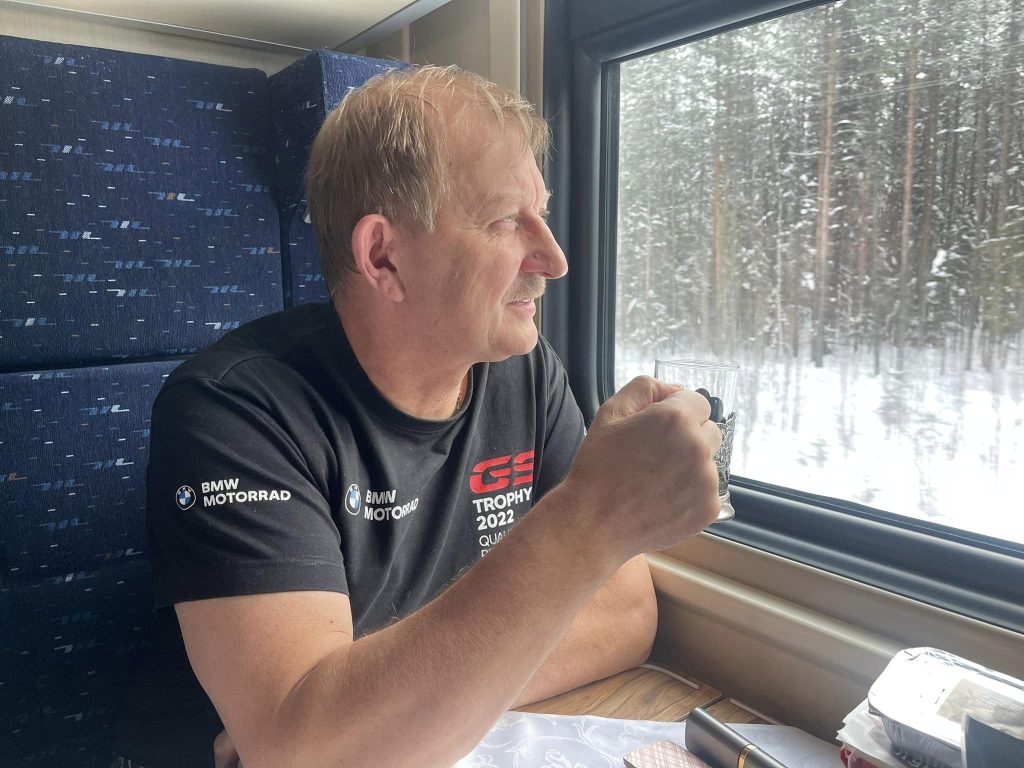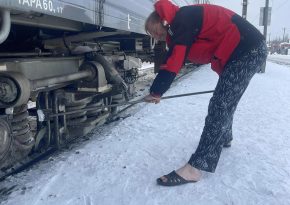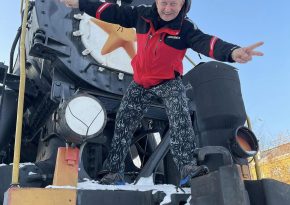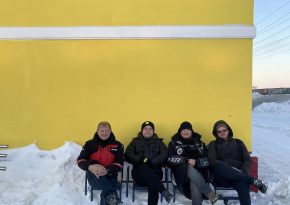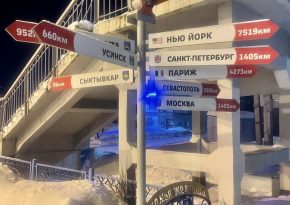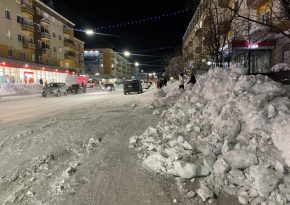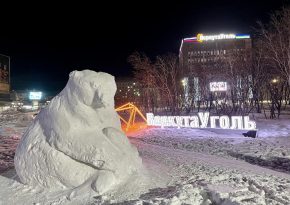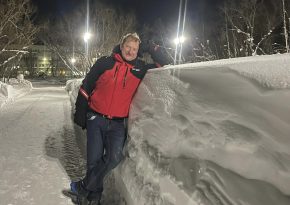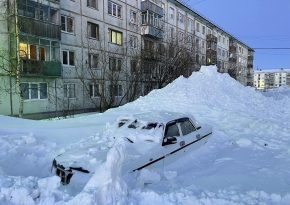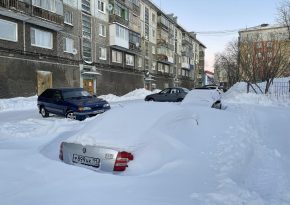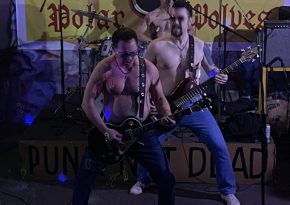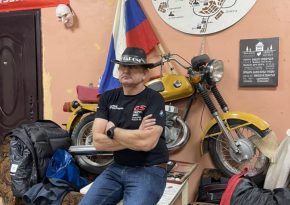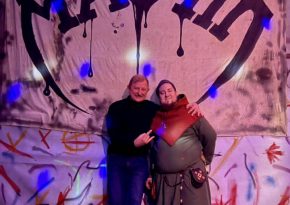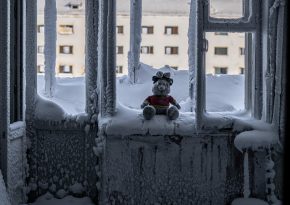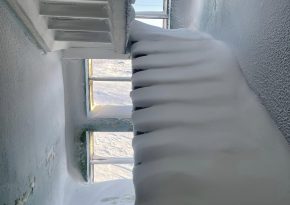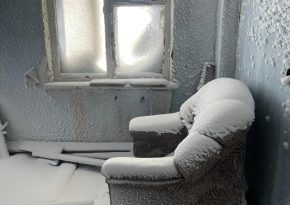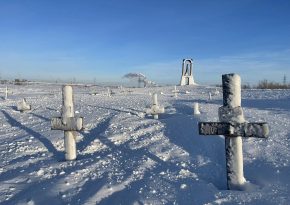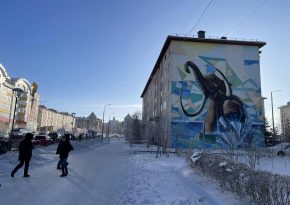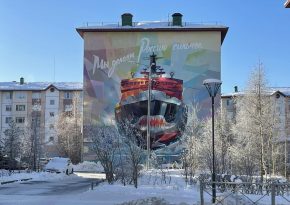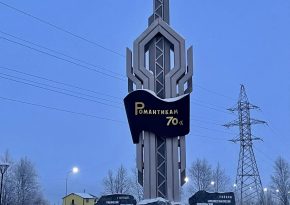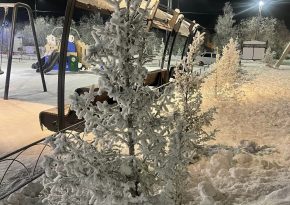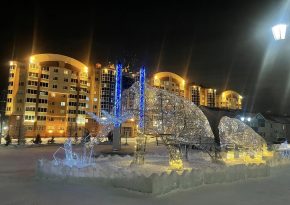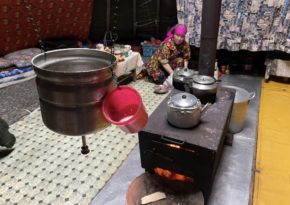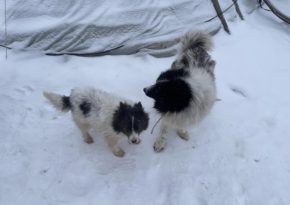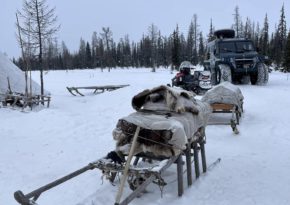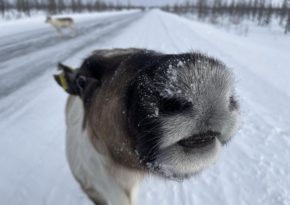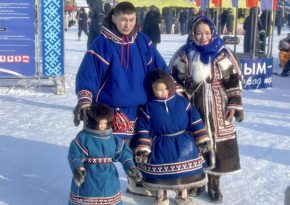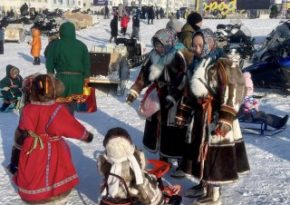Along the tundra, along the railroad,
Where the "Vorkuta - Leningrad" courier rushes.
This is the lyrics of a Russian song.
-Why Vorkuta? Why in February? - surprised questions from friends suggest some more or less intelligible answer.
But I don't have one.
21.50. Moscow-Vorkuta express train departs from platform 1 of track 1.
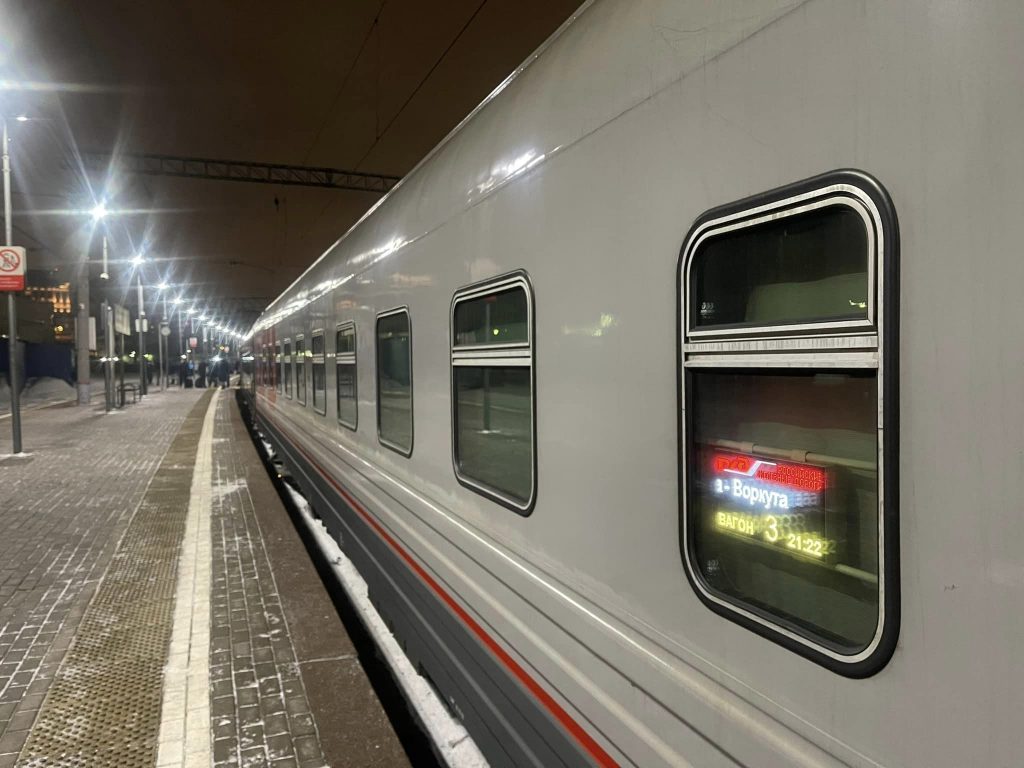
Fourty hour series "Journey to Vorkuta" has begun.
Almost two days in the compartment of the train number 42 with the romantic name of Vorkuta in the company of three motorcyclist friends flew by unnoticed. However, for two nights I had to bum around the carriage with bedding under my arm in search of a vacant shelf, since it was impossible to fall asleep under the thunderous roar of my comrades' not very melodious snoring. Earplugs didn't help.
Remember these faces and never share the same compartment, room or cabin for the night with them.
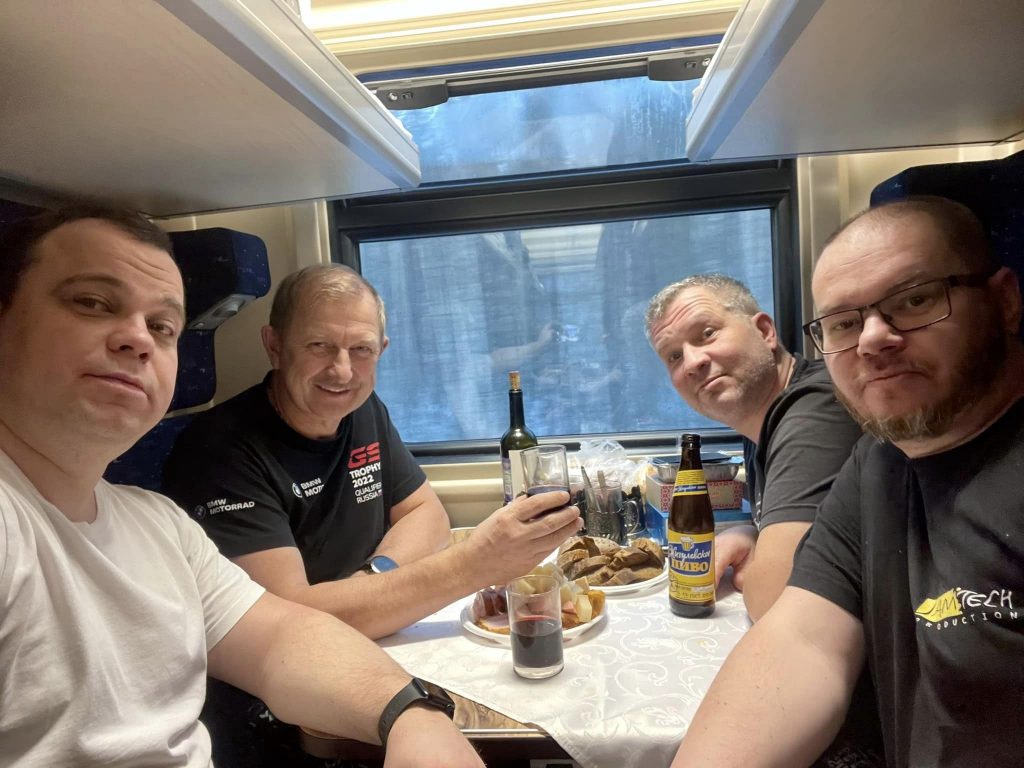
It's been a while since I travelled by rail. New modern cars with shower cabins, perfectly clean bathrooms, online food delivery from the dining car, smiling conductor and comfortable compartments were strikingly different from the images from my distant youth that surfaced in my memory.
The landscape outside was not very diverse. The farther away from Moscow, the lower the houses and the higher the trees. Infrequent stops at snow-covered stations, grannies offering pies and jam, gloomy workers in orange vests with crowbars in their hands, beating the ice from the wheels, gray faceless buildings along the line - the monotonous life of the railroad, its permanent and temporary inhabitants measuredly floated outside the compartment window.
By the end of the second day, the endless forest was replaced by the endless tundra, and in the distance, in the frosty fog, the ridge of the Polar Urals appeared.
Velsk, Kotlas, Ukhta, Pechora - there are more than 50 stops on the way. Most of the journey the train was pulled by a diesel locomotive on a single track.
With the measured sound of the wheels we crossed the Arctic Circle and soon the outline of the city buildings with the tall chimney of the thermal power plant protruding all alone appeared on the horizon.
Welcome to Vorkuta!
— Well, your turn, Fedya. Say the city in D.
— Vorkuta
— Why Vorkuta?
— I was in prison there (c)
From the movie Gentlemen of Fortune.
Vorkuta, like Magadan, is associated with the words - terrible cold, the eternal permafrost, the edge of the earth, tundra, deer, polar nights, Gulag and prisons...
It all stayed the same. Except for the prisons and Gulag. The largest camp in the Gulag system, the Vorkutlag, created in 1938 to develop the richest coal deposits and numbering up to 73,000 inmates during its "heyday," was liquidated by 1960 and now there are no camps or zones in Vorkuta.
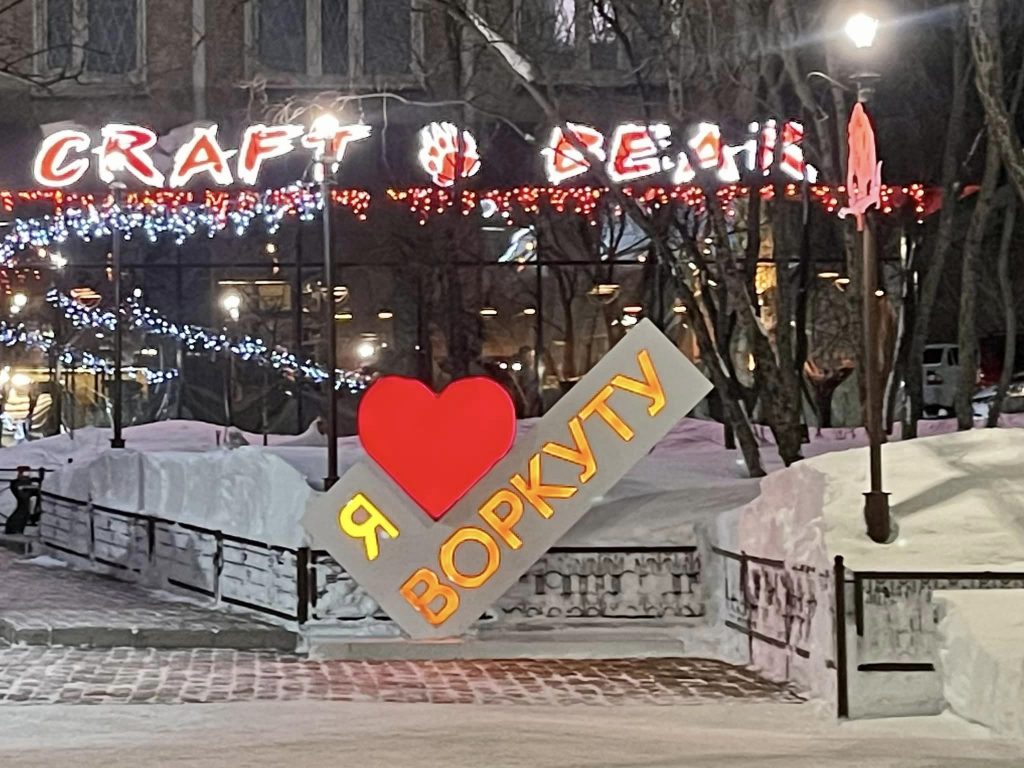
So do I! But only as a guest!
Though, Europe's easternmost city beyond the Arctic Circle is experiencing bad times today in the last decades of its existence. Of its two dozen mines, most have closed, and people are leaving for the "mainland," selling their apartments for pennies or simply leaving them abandoned. Evening stroll through Vorkuta left a complex impression.
From the one hand, a modern city with a beautiful park, blazing advertising lights, decent restaurants and cafes, clean but slightly snow-covered streets and cars, a sports club, theatres and stores, where you can buy almost everything the same as in the mainland. Prices also seemed quite adequate and noticeably lower than in the capital.
The center of Vorkuta cultural life - Miners' Palace of Culture.
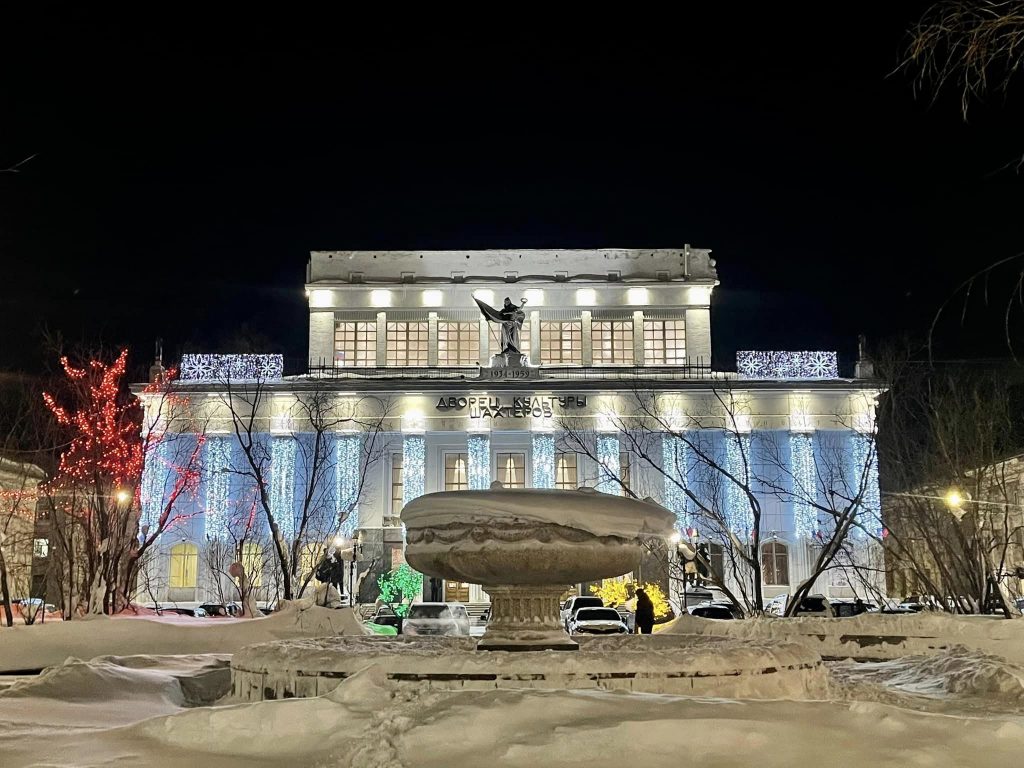
The new buses offer to build a happy future with Vorkutaugol, the city's main giant enterprise.
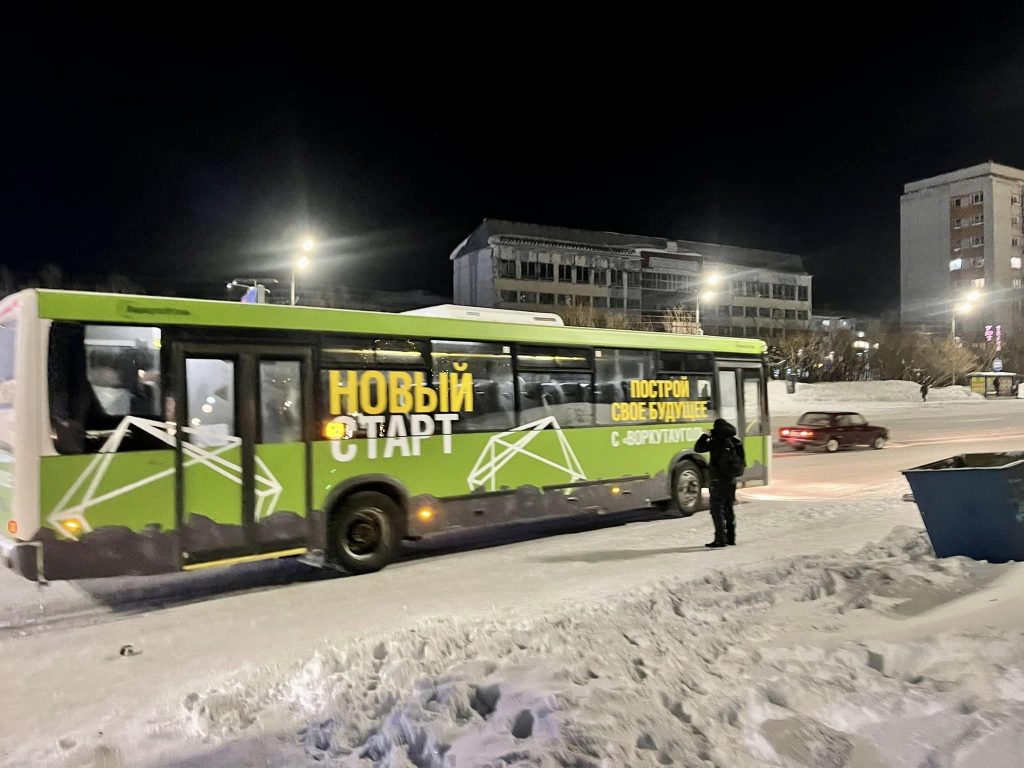
Two days before our arrival, a heavy cyclone passed over Vorkuta, a couple of meters of snow fell, with winds up to 40 meters per second. In any city in central Russia this would have caused a collapse, but for Vorkuta it is a common occurrence.
The reindeer in the park is one of the city's attractions.
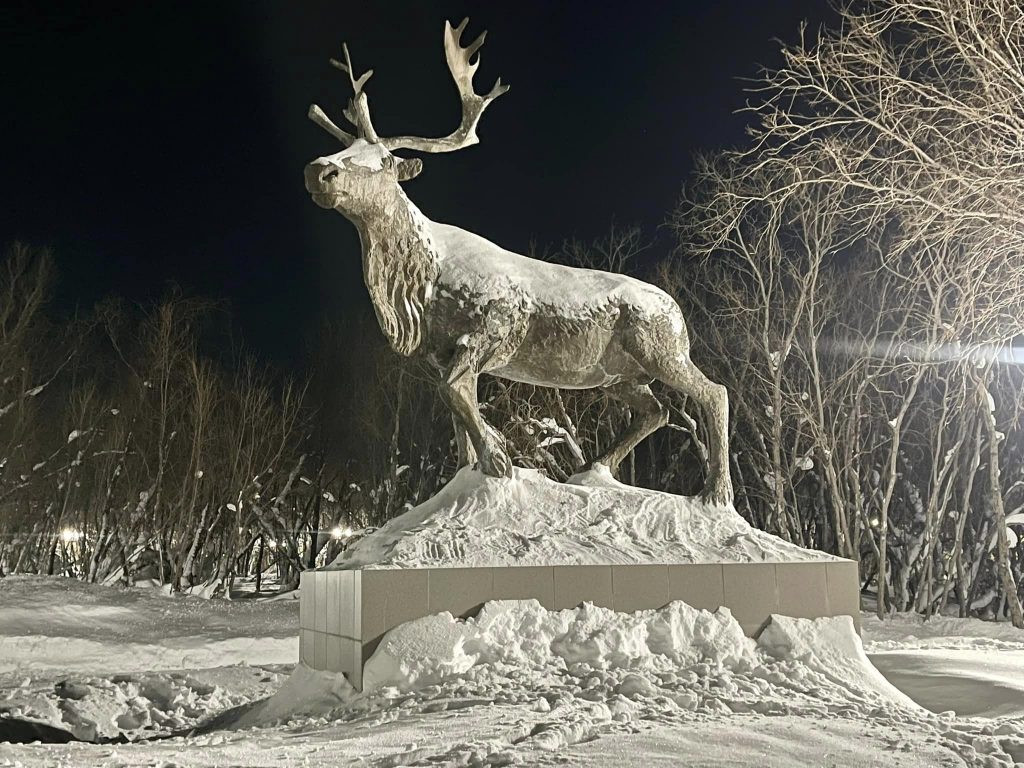
Thai massage and spa treatments beyond the Arctic Circle? Why not?
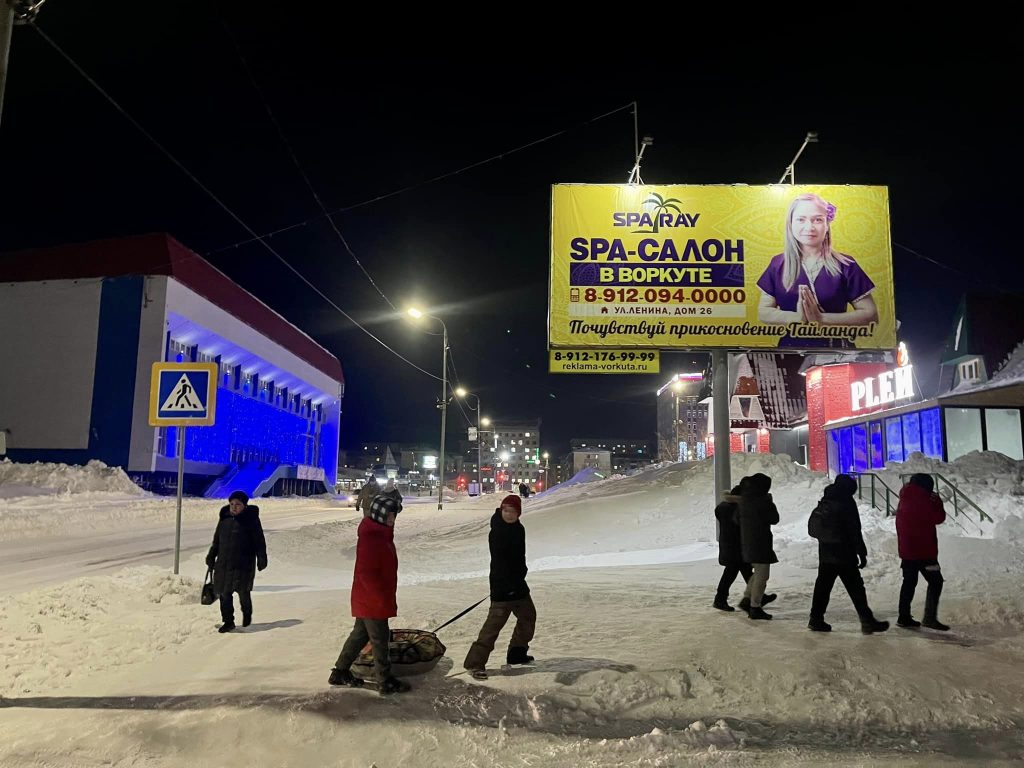
Russian Post in Vorkuta. But this branch is temporarily closed. Apparently, until summer. Or until better times.
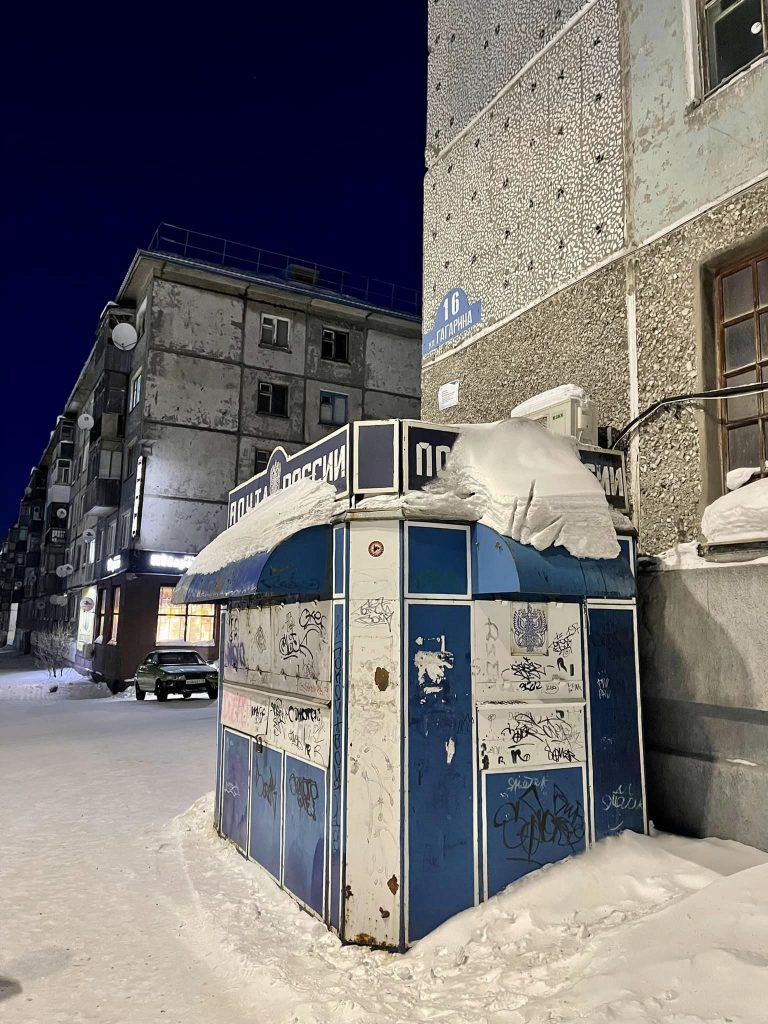
From the one hand, locals feel like they are residents of an island, and they feel disconnected from civilization. Another thing is that you can't get to Vorkuta by car. There is no road. No road at all. Except for the railway. Or by plane, but there are direct flights to Moscow only in summer.
People are leaving, and it's understandable.The region is harsh, 9 months winter a year, polar nights, tundra and swamps all around, there are problems with unemployment as well.
Who complains about Moscow janitors?
Signs from the 70s are quite common.
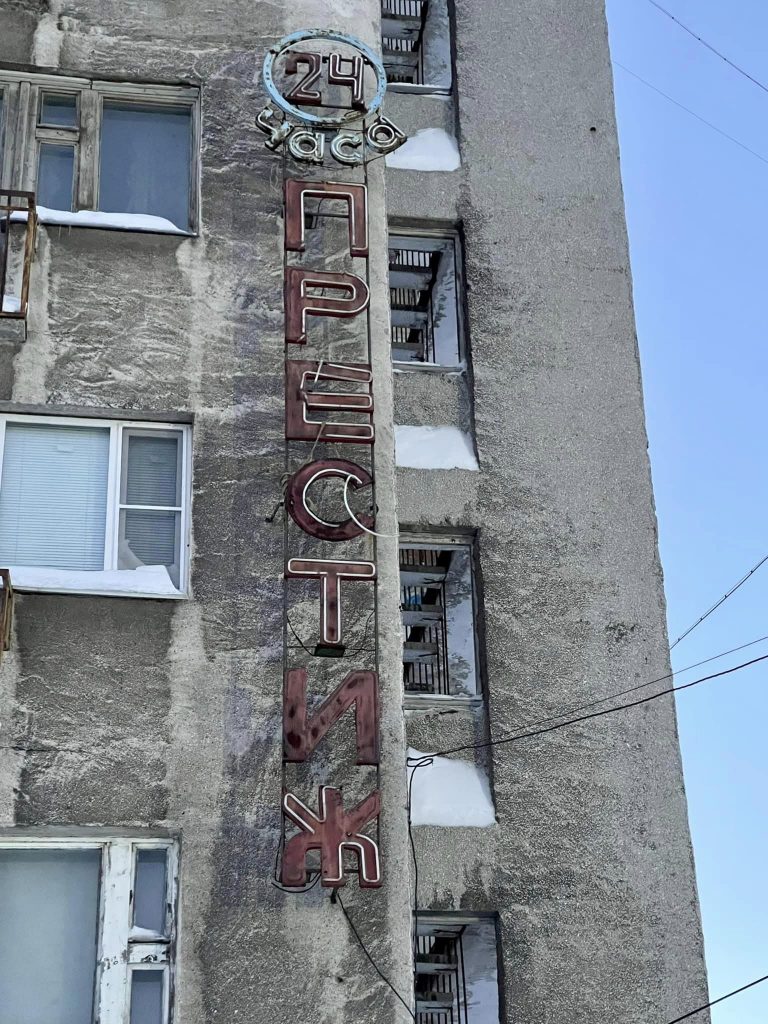
Empty houses with black window openings across the river. There is no life there.
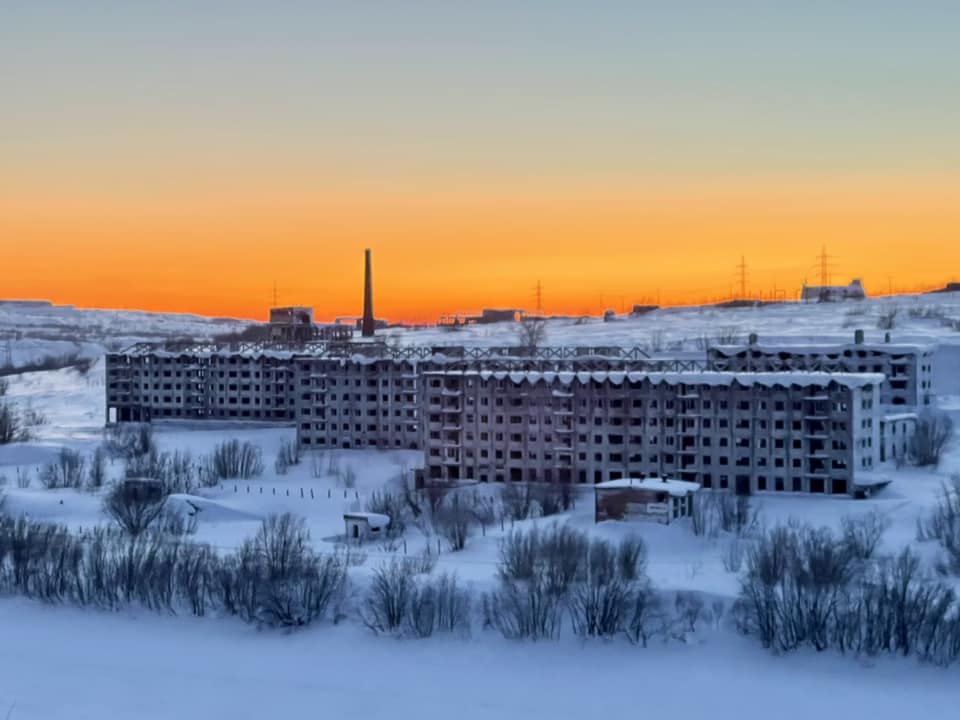
Nevertheless, the residents of Vorkuta are not discouraged and look at life with a certain amount of optimism and humor. Perhaps, because you simply can't live here otherwise.
Last night we spent at the Polar Wolves club.Despite the fact that summer in Vorkuta lasts for a couple of months, there is a motorcycle community and they have their own moto club, which amazed us with its scale and creativity of the members! Family atmosphere, great dinner and even a rock concert with three professional punk bands - it was awesome! All the guys and especially the head of the club - Alexey Pomortsev - huge respect!
Miner, give some coal to the country!
"Coal is the bread of industry!" the giant letters on one of the buildings in Vorkuta declare.
One can't argue, but coal is the reason why Vorkuta appeared on the map and why it continues to exist.
Coa - Heat - Life.
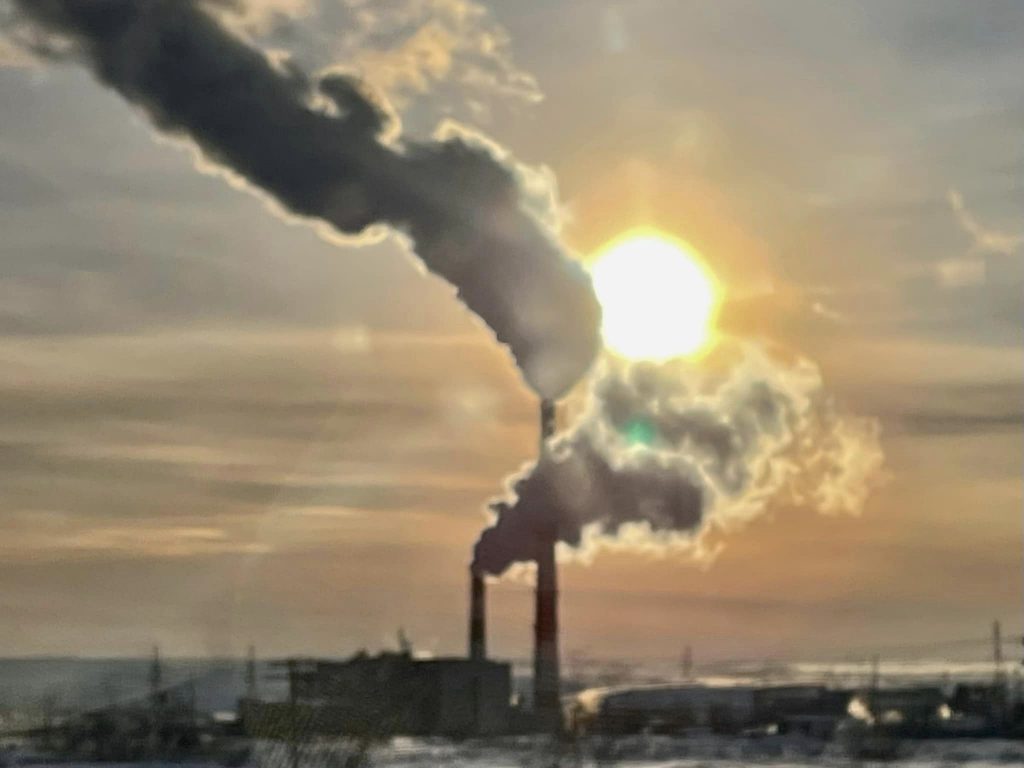
Vast reserves of high-quality black gold were explored by geologists in the early 1930s, and from that time history of Vorkuta, the coal capital of Russia begins. Over time, satellite towns began to spring up around the rapidly growing city, each built near a coal or surface mine. Some of them numbered tens of thousands of inhabitants and were, in fact, small towns with all the infrastructure. By the end of the 1970s, these settlements were connected by a highway called the "Vorkuta Ring", 52 km long. We set off along it in the morning, and Alexey Pomortsev, president of the Polar Wolves club, was our guide on this unusual journey.
Frost and -20 outside did not prevent one of the most unusual excursions of my life. More than 10 km through deserted streets of abandoned villages, some of them resembling ghost towns with empty high-rise buildings with no windows and doors, with collapsed roofs and balconies. There were drifts of snow on the stairwells and in the apartments, the walls and ceilings covered with a thick coat of snow.
Culture House and Lenin with a big pile of coal behind him.
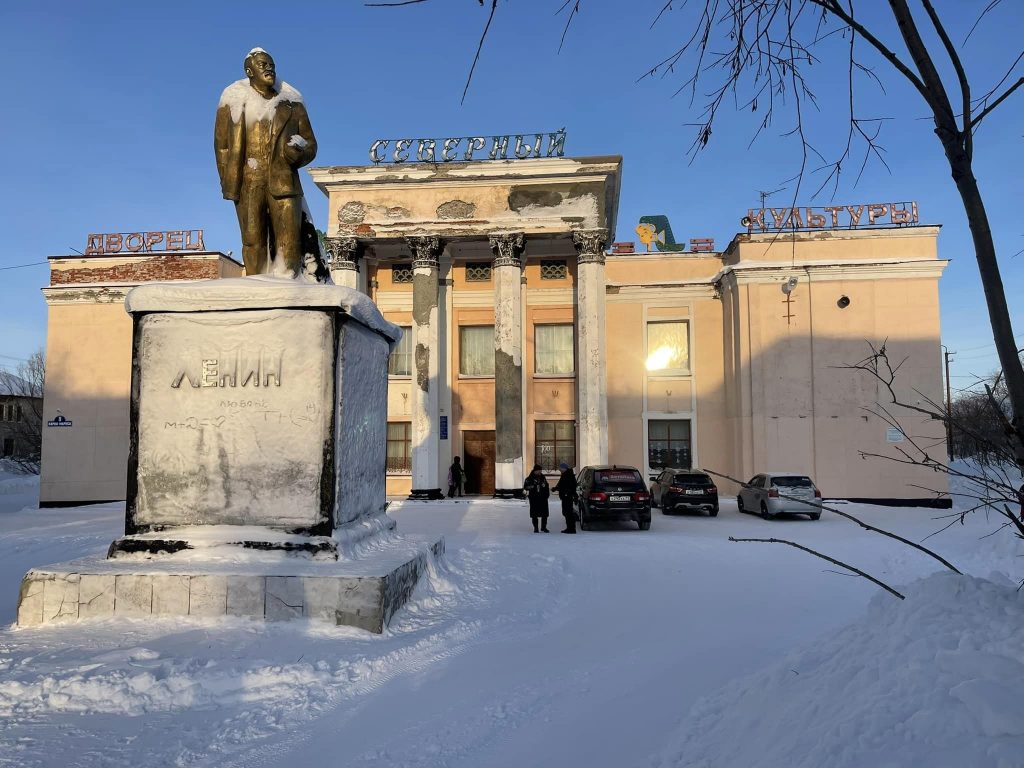
Zapolyarny village is still more alive than dead.

Komsomolsky village and the eponymous mine apprear a sad sight.
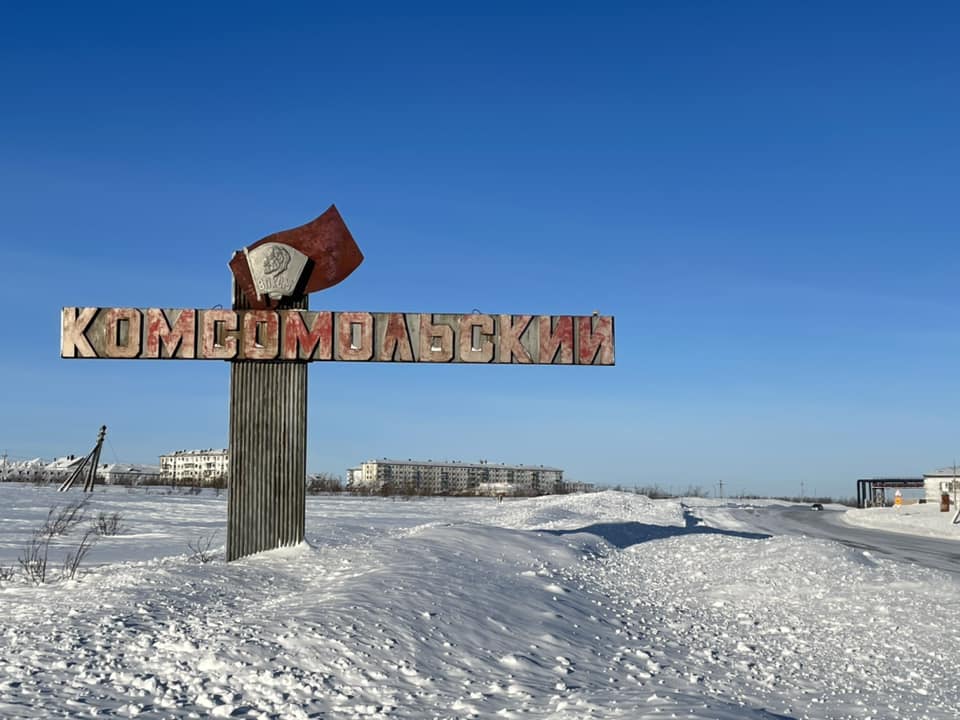
Vorgashor village is still breathing. But not deeply.
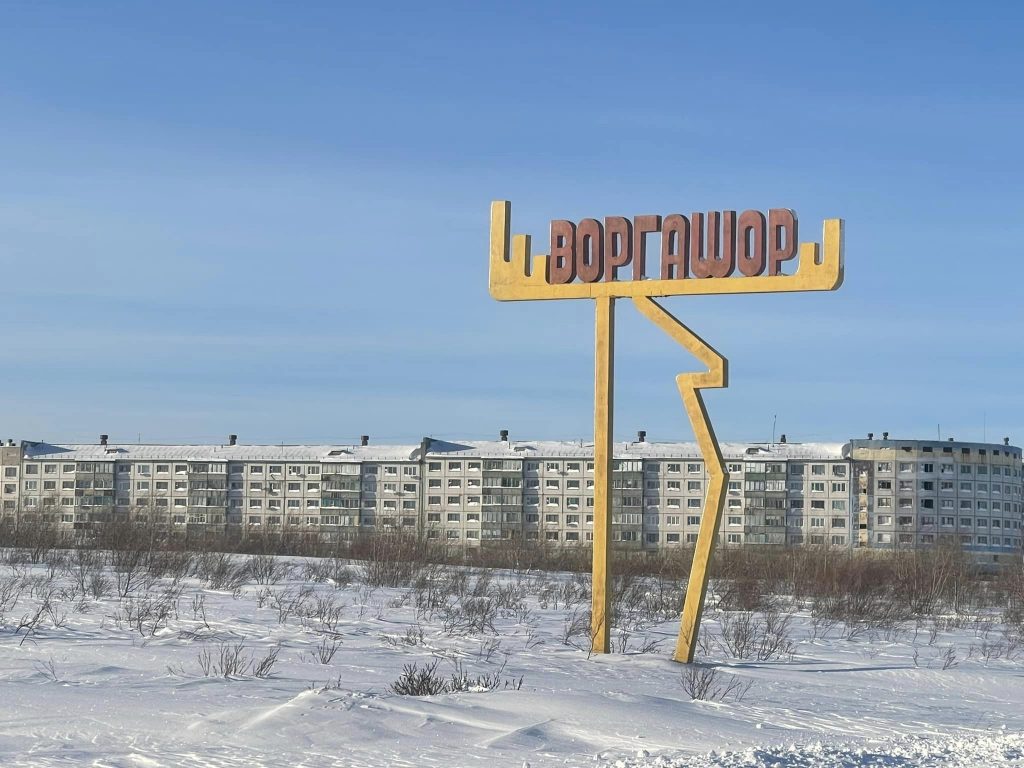
Lenin lived, Lenin lives, Lenin will...?
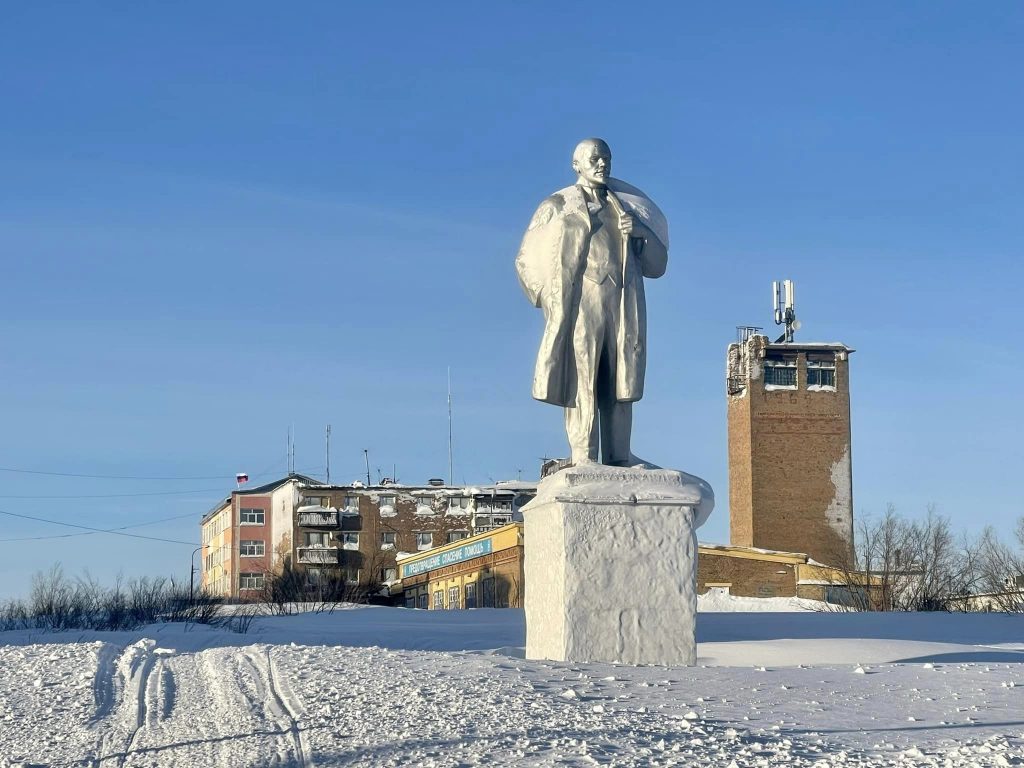
Do youngsters know that Glory and the CPSU are not the same person? (wordplay in Russian)

Snow was everywhere - on abandoned furniture, sofas and armchairs, in bathrooms and kitchens, where people used to live, on playgrounds where children played, grandmothers sat on benches, and now everything around them has turned into a cold realm of ice and snow. Creepy!
Even in the villages with mines that are still in operation, most of the houses are abandoned, sometimes there are no windows and doors, and people live in the other half of the house. It seemed unbelievable to us!
Not sure if pictures can capture the atmosphere of the deserted cities and all that apocalypse, but it's really impressive!
Could you play a nocturne with frozen fingers on a frozen piano in an icy apartment? And our comrade Denis could
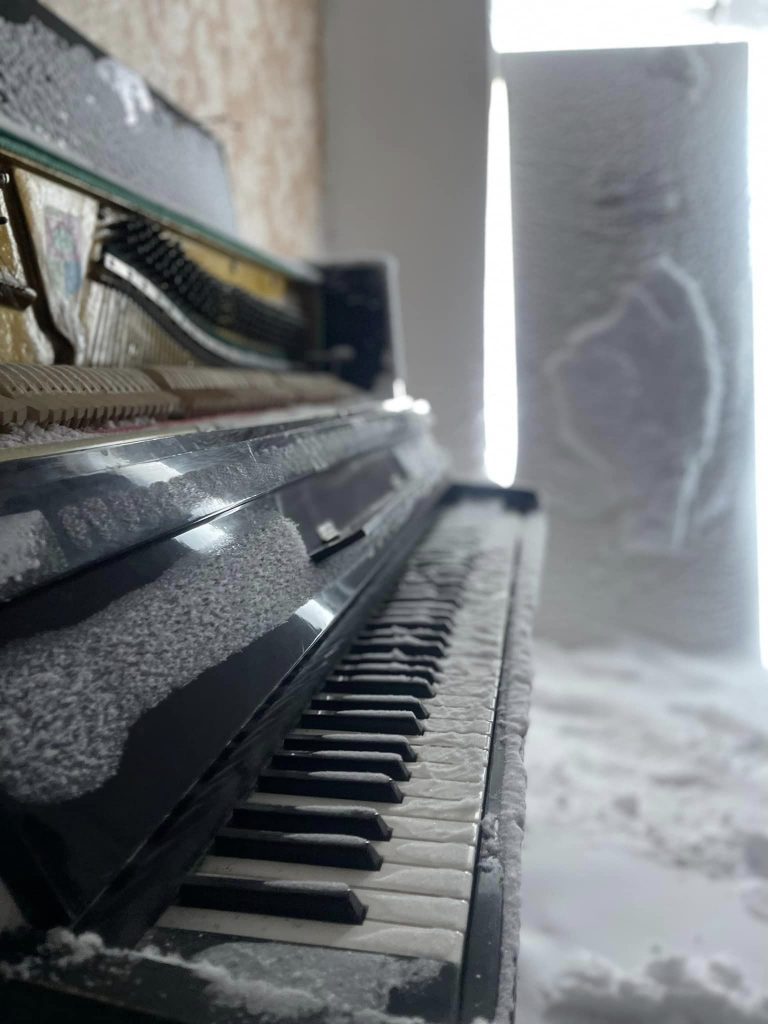
The realm of cold and ice.

Примечательно, сто в этих заброшенных поселках чистят снег.
For my faith without sacrifice
have I rested in peace
This is the lyrics of a Russian song.
Shortly after the death of Mr. Stalin, the Leader of the Nations, in March 1953, global changes began to take place in the Gulag system.
Thousands of prisoners were amnestied, sentences were reviewed and terms of imprisonment were reduced, and commutations of the prison regime were made possible and even necessary. But by the summer of '53, these changes had not reached the vast Vorkuta prison, which was the reason for the large-scale strike and disobedience of the prisoners that later became known as the "Vorkuta Revolt.
The convicts sabotaged work, refused to go down into the mine, and even demanded the authorities come from Moscow to negotiate.
Rebellion was harshly suppressed and about a hundred people, mostly convicted on serious articles for treason, members of the UNA-UNSO, the Balts and "political" were shot.
In commemoration of this tragic event, a memorial with names inscribed on a granite stone is erected near the village of Yur-Shor, where the victims are buried.
The cemetery is right by the road leading to the mine.
Another Catholic-style monument-chapel.

Stella - Monument to the coal.
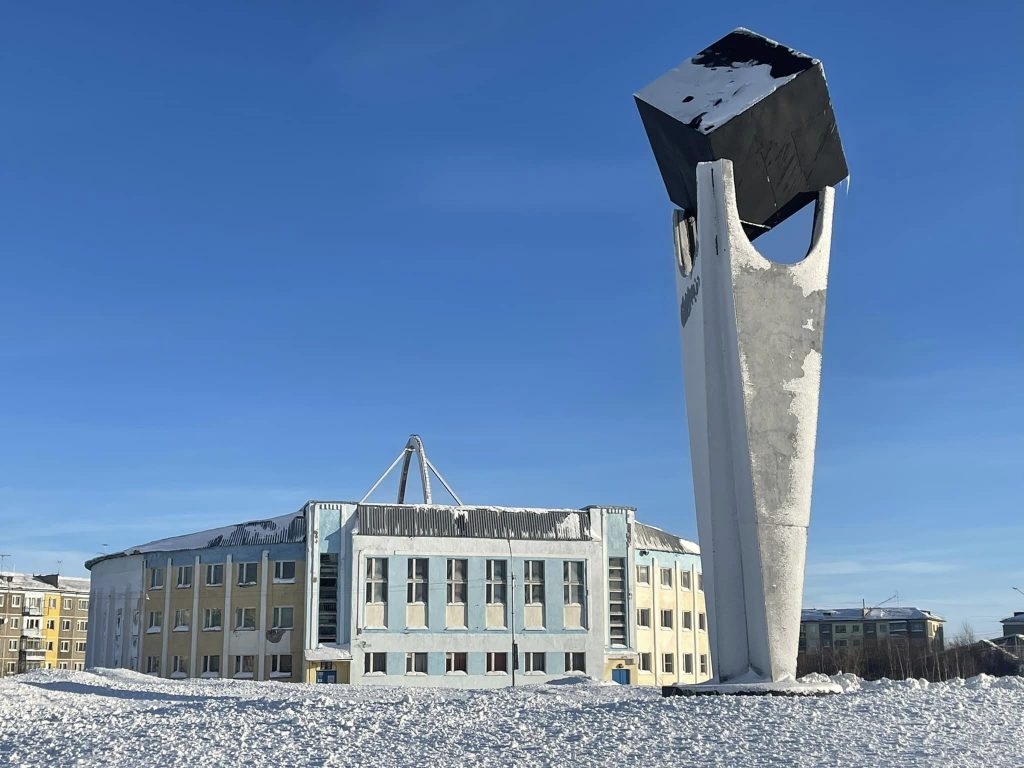
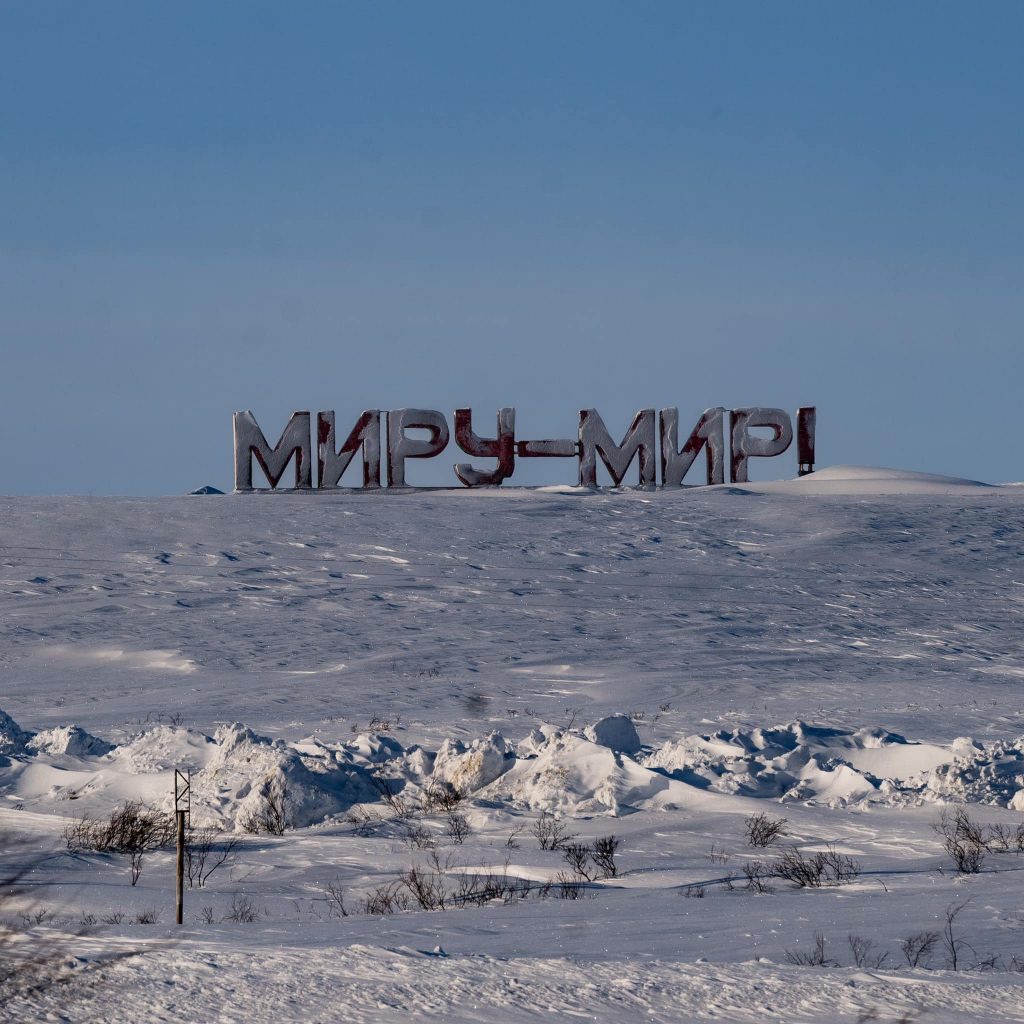
"You will see that in vain
The North is called extreme..." (c)
Our journey through the Far North of vast Russia continues.
It's been a long time since I traveled in a second-class car. ))
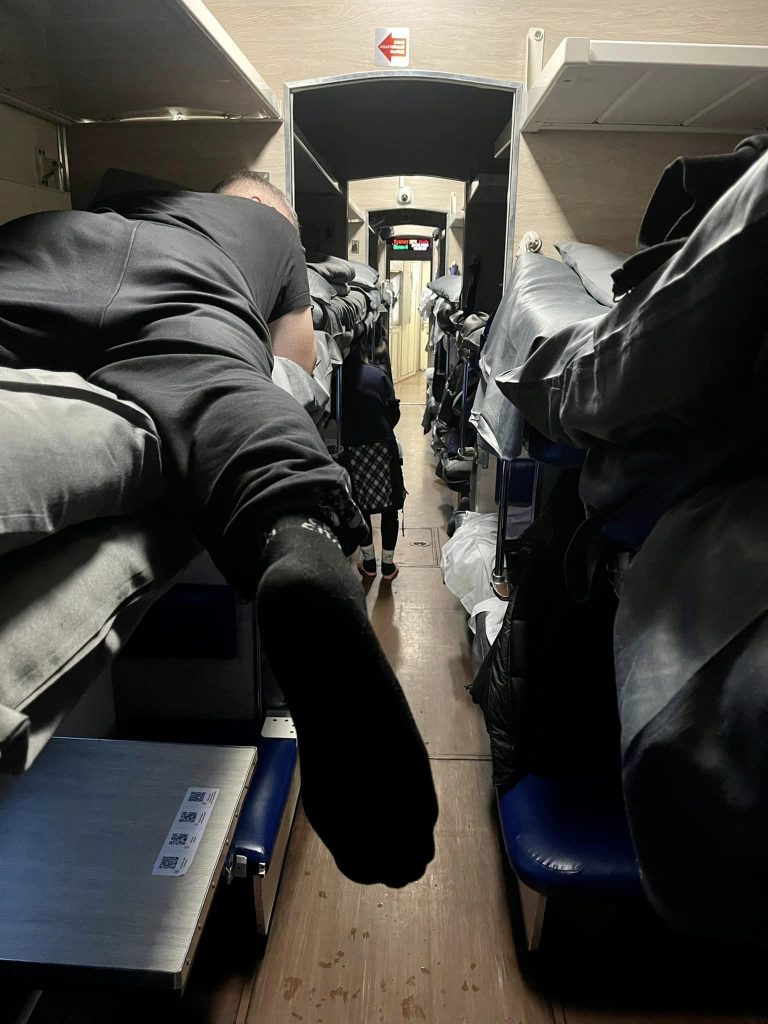
Christmas comes but once a year. (proverb)

Eight hours in a four-wheel carriage on the Vorkuta-Labytnangi train crawling slowly through the tundra, minus 25 degrees overboard, doshirak, tea in bags, short breaks at snow-covered stations, 48 games of fool's play, and we are in Kharp, a town in which, surrounded by several rows of barbed wire fences, is another town, IK-18, a maximum security colony for life prisoners, known as the Polar Owl. A creepy, scary place.
Harp - short and not very melodious name of the city conveys its essence very well.
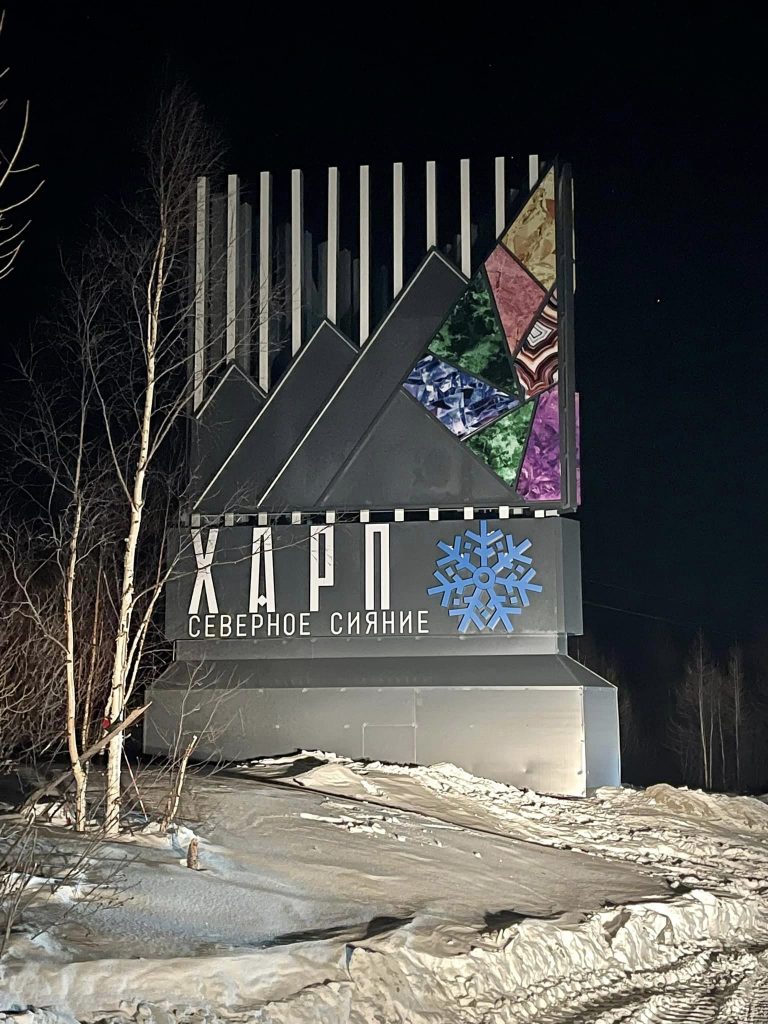
The Yamal-Nenets Autonomous District is an area of permafrost, snow, reindeer, and gas fields.
This is a harsh land!
After passing through a small town with the unusual name of Labytnangi and crossing the ice road across the Ob river, we arrived in the capital of YNAO, tale town of Salekhard.
How many times have I crossed the Arctic Circle? Didn't count. Probably 30-40 times.
To say that I was surprised at what I saw as I drove through the streets of this small but ultra-modern city of fifty thousand people is to say nothing.
Salekhard is exactly on the 66th parallel (the polar circle), they say it is the only one in the world. After Vorkuta, it was as if we had entered another world - at night the streets were brighter than during the day from the fantastic illumination of new buildings, bridges, and streets. Advertising lights, ice sculptures, monuments, some unimaginable installations, shimmering with all the colors of the rainbow - just fantastic!
A walk around Salekhard.
A monument to the mammoth as a symbol of the city at the entrance.

Mammoth is pretty big. Bigger than a real one. Before the New Year they covered him with a huge blanket. Probably so he wouldn't freeze to death. ))

Very beautiful drawings on the houses are a distinctive feature of the city.
There are a lot of bright colors, graffity, beautiful pictures, and the city is not overloaded with advertisements. Everything is harmonious and modern. Credits to the chief architect!
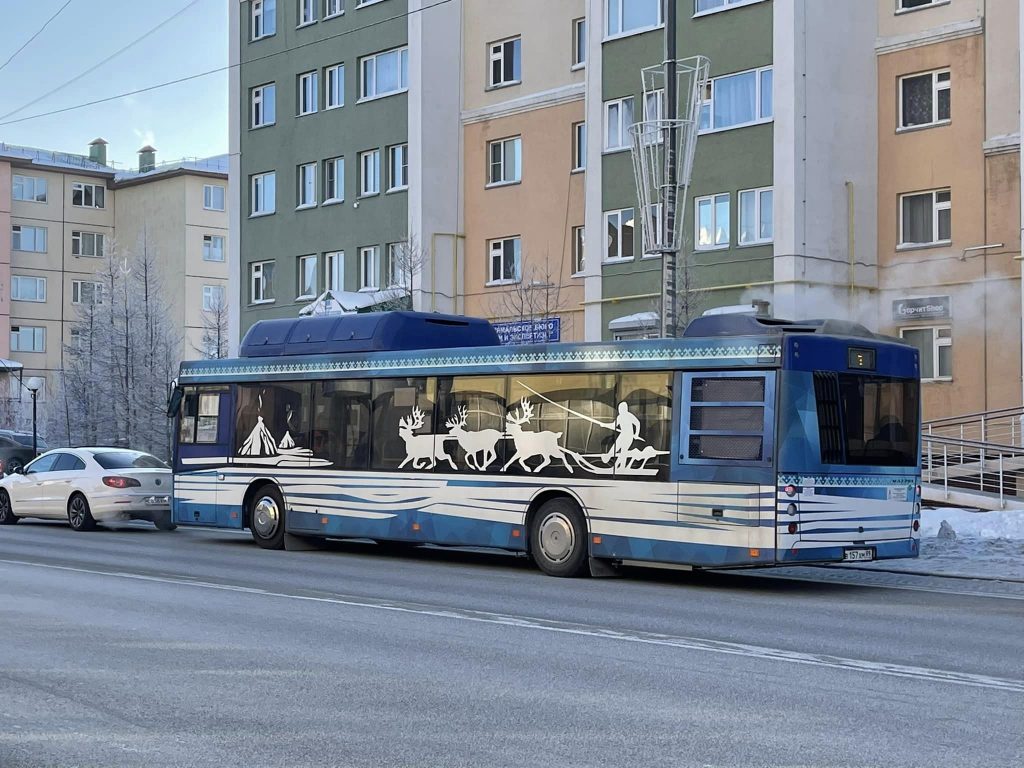
Ostrog. On this spot in 1595, Obdorsk, today's Salekhard, was founded.
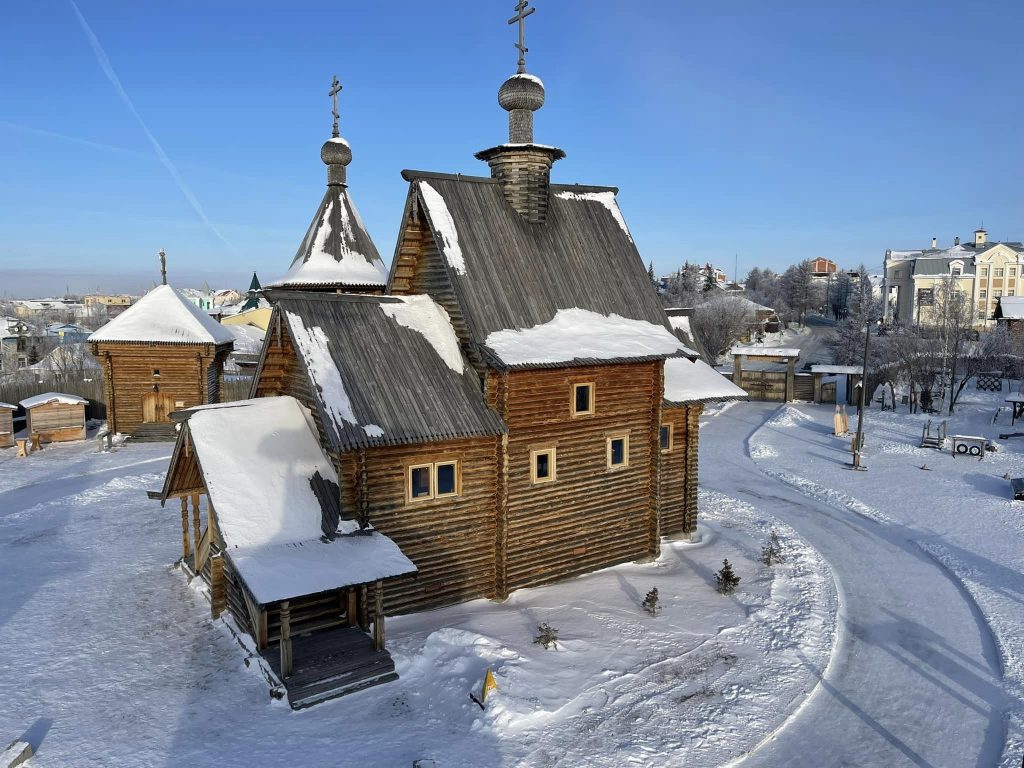
You can meet a nice reader on a bench in the park.
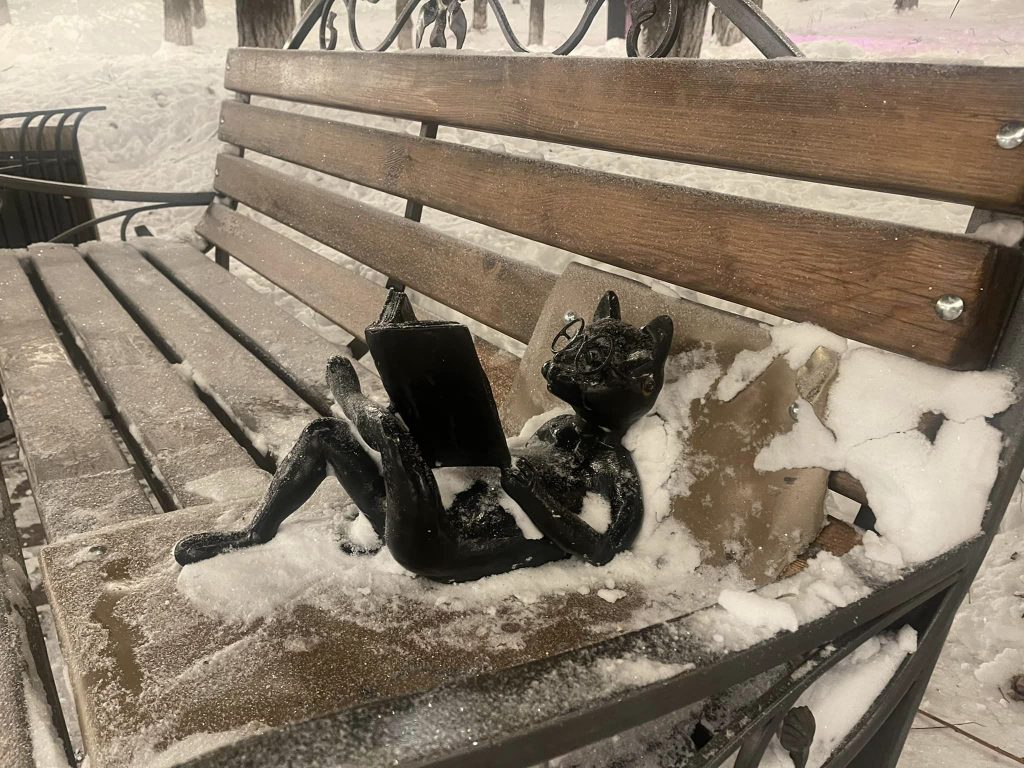
The thermometer has dropped to 30 degrees, but the frost is not as severe here as in Moscow. Only the snow creaks under your feet and your face tingles when you're not used to it. And the battery in the iPhone runs out quickly, because we want to capture all this beauty as a memory.
"A steam train is good,
Steamboat is good,
The plane is okay,
And deer are better!" (с)
This is a line from a Russian song.
The unusual all-terrain vehicle Trakol on huge wheels, raising a blizzard of snow behind it, made its way through the deep snow that covered the endless tundra.
We go to the southeast, where about 40 km from Salekhard should be a reindeer herders' camp. In contrast to the tourist scenery in the style of "Egyptian Bedouins", this is a real family, which is actually engaged in reindeer herding all its life, most of its life is spent in the tundra and has nothing to do with tourism.
Finding them was not so easy, there is no road there. It was lucky that our guide was a wonderful guy, the owner of the miracle car, Dmitry Neyolov.
The tent of the hereditary reindeer herder Vasily Nogo was situated at the edge of a sparse forest, and around it were many narts, on which they transport all the household, including the tent itself. The narts are very light and strong, made without a single nail. On a rope stretched between the trees hung reindeer skins. Funny shaggy dogs of unknown breed ran towards us with loud barking, but in a minute they were already squealing and rubbing against our feet.
Vasily came out of the tent, said hello, asked how we got there, and, throwing back the canopy, invited us into his dwelling. The tent is a two-layered pyramid on a frame of wooden poles. The first layer is felt and the second is made of deer skins. Inside it is quite spacious, as Vasiliy said, four-roomed. The partitions of the rooms are cloth canopies, which were rolled up and fastened on top. In the middle is a wood-burning iron stove that serves to heat the room and cook food, behind it are many Orthodox icons. The floor is planks lying on a leveled ground and covered with pieces of linoleum. On the sides there are many folded blankets and pillows. It is very warm, clean and comfortable in the tent. The hostess was bustling around the stove, preparing dinner.
While she set the table, Vasily willingly told us about life, his family, his life, and his reindeer.
He himself is from a mixed family of Khanty and Mansi, although his passport says he is Nenets. He speaks three languages fluently, including Russian. He is a very open, hospitable, interesting man.
After a delicious lunch with a bottle of vodka we brought, frozen reindeer, fish and other natural products, we rode on snowmobiles to the place where his herd of reindeer grazed.
It is about 15 km from the parking place and half an hour walk. The herd was found quickly, the reindeer grazed in the lowlands, hooves raking the snow in search of the main food - the yagel.
Vasily talks to the reindeer in their language.
About 150 head of beautiful gray and white deer are there in the herd, and as they run, a blizzard of snow from hundreds of hooves rises up in a thick, dense fog. Beautiful!

All the clothes of the reindeer herders are of very high quality, durable and fully adapted to their way of life.

We approached them on snowmobiles, took pictures, and after freezing, headed back..
We returned to the parking lot, drank tea with delicious cheesecake and returned to Salekhard by nightfall.
It's warm and cozy in the tent, but there's a blizzard and frost outside.
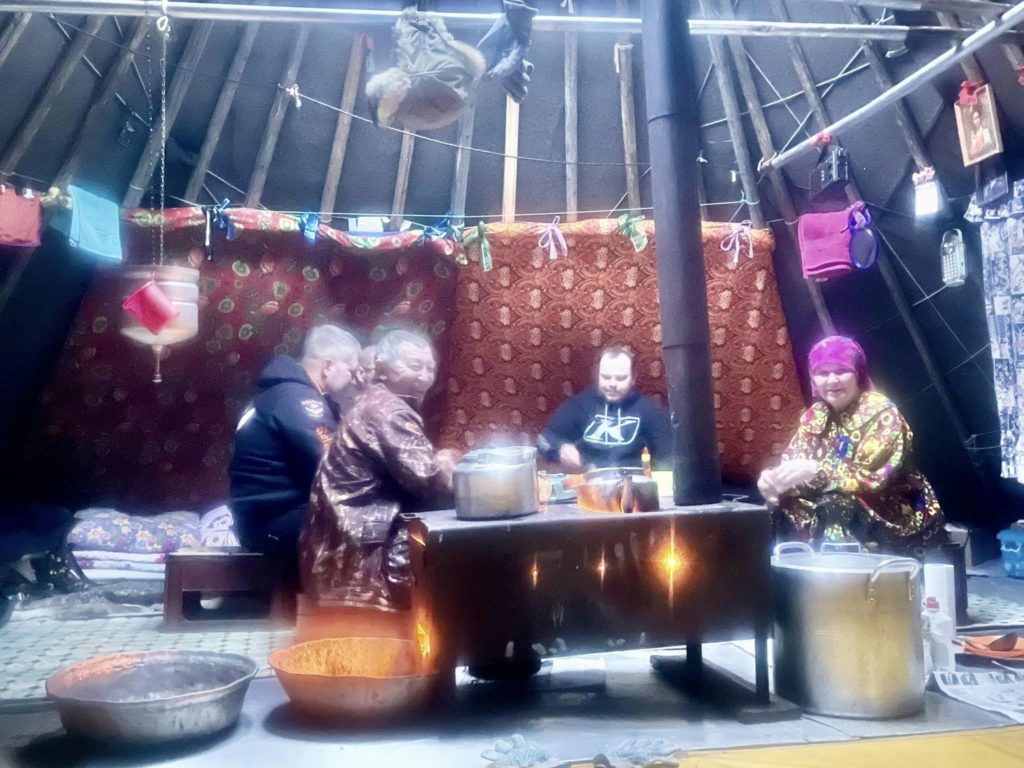
One of the most interesting days of our trip has come to an end.
There are 333 km through the tundra from Salekhard to Nadym. On both sides is a monotonous landscape of snow-covered endless expanses and low-level sparse forests. The road is partly asphalted, part of it is gravel and swollen ground, where our car is trying to fly up and we are trying to break the roof with our heads.
There are lots of rivers in this area, so bridges are quite common.
-
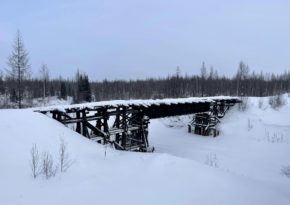
-
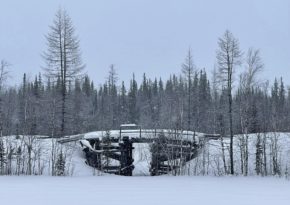
This highway is famous for the fact that the "Dead Road" runs parallel to it - the famous construction site 501.
Have you heard about this grandiose project of Comrade Stalin? No? It is on a par with or even exceeds the development of the Kolyma and the White Sea Canal.
In 1947, 2 years after the end of the war, on the personal instruction of the Leader of the Nations the construction of the Transpolar Mainline was launched, which was to connect the coast of the Barents Sea with the Sea of Okhotsk and reach Chukotka. Look at the map and imagine the scale! And if you consider that a significant part of the railroad was to run through regions of permafrost, taiga, impassable swamps and cross hundreds of rivers, it becomes uncomfortable and the project seems unbelievable!
But no matter what, construction began and lasted until Stalin's death in 1953.
During this time, some sections came into operation, one of which we even drove on the road to Salekhard.
But further on, from Salekhard to Nadym, the construction site was frozen and subsequently destroyed in a natural and not very natural way. However, to this day on both sides of the route you can still see fallen bridges with sleepers hanging in the air, rotten and collapsed barracks, towers, fallen barbed wire fences. Yes, these are Gulag camps.
This wooden tower has only survived for 60 years because of the harsh climate.
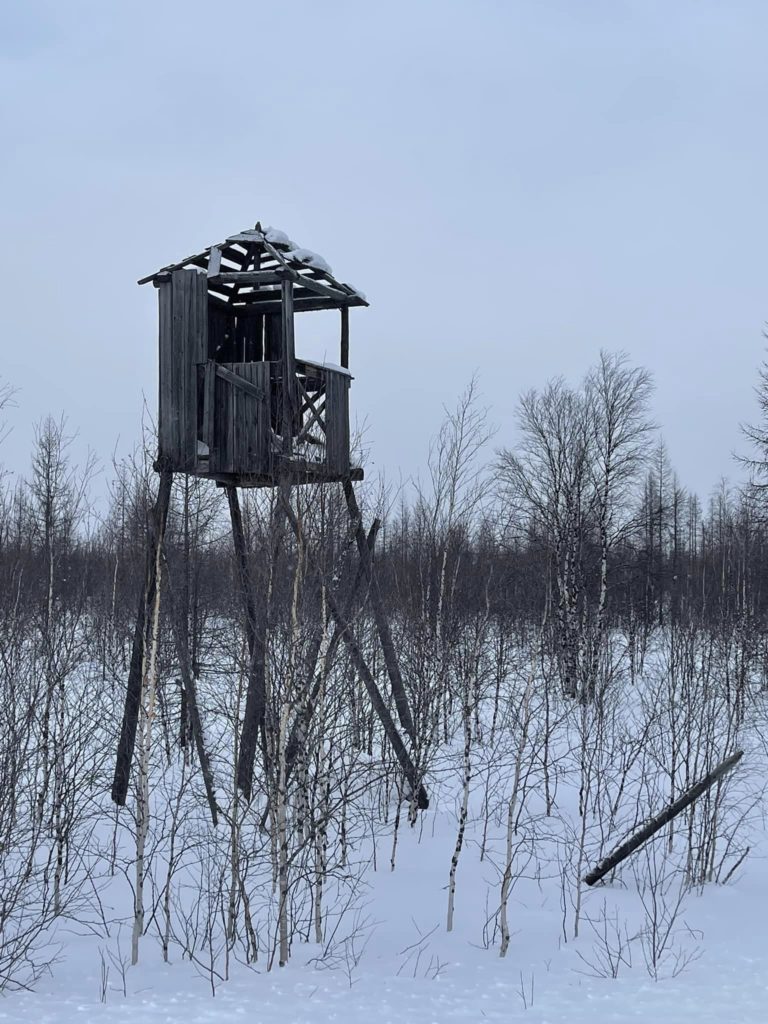
Tens of thousands of prisoners were drawn to this unimaginable project; many found their deaths here.
We stopped near one of the former camps and walked up the path to the barracks, or what was left of them.
Unfortunately, there is less left of the people.
Canteen. Tubs in to cook food for 300 people.

Dwelling barrack
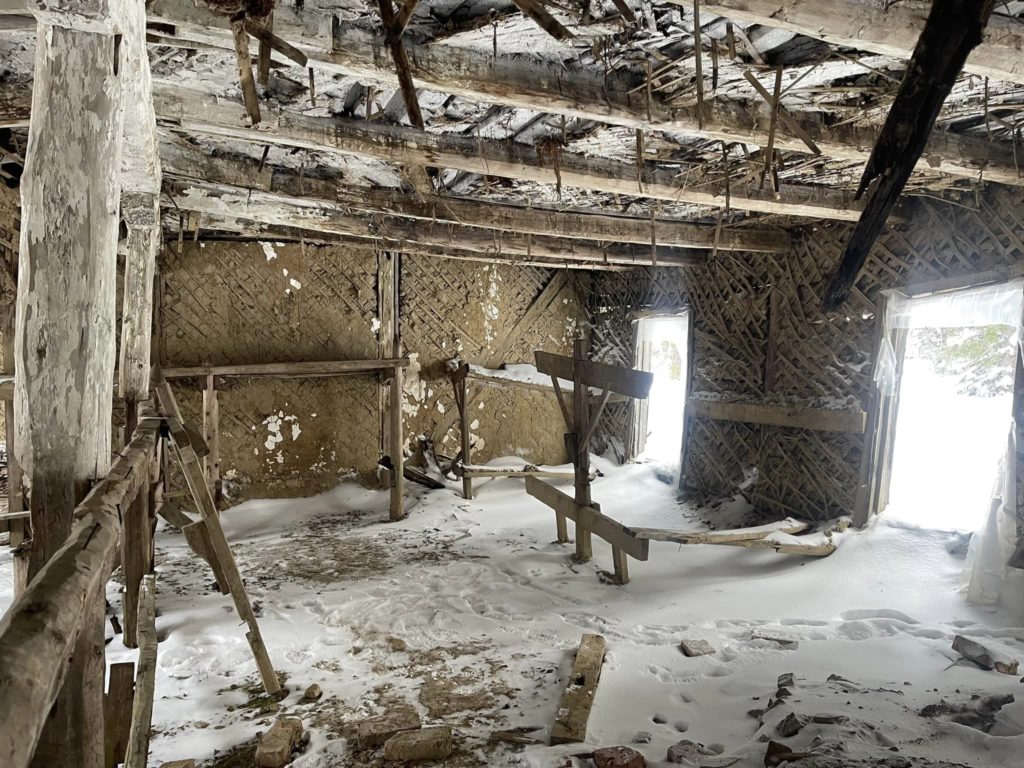
Arrived in Nadym.
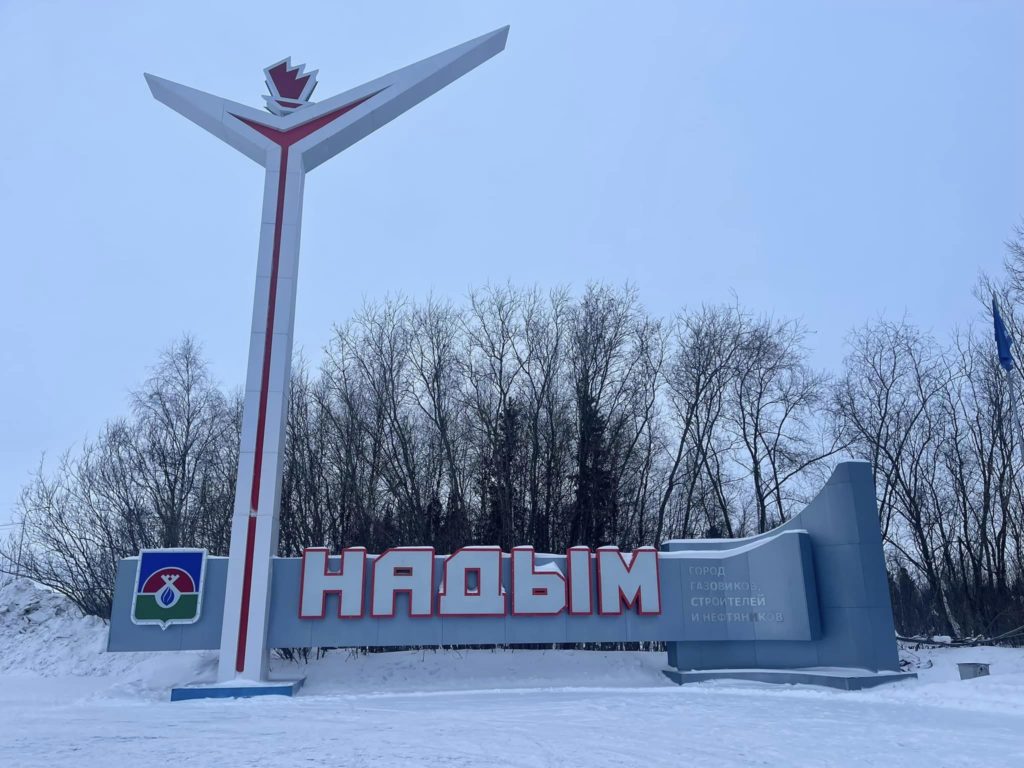
Have you ever thrown a yinjiang at a choreye?
Sure few people know what it is.
Didn't you try to do at least 20-30 jumps over the sled without fail? Well, don't ask about reindeer sled racing and tug-of-war at all.
This guy here can jump over the sledge up to 500 times continuously. Maybe even more!
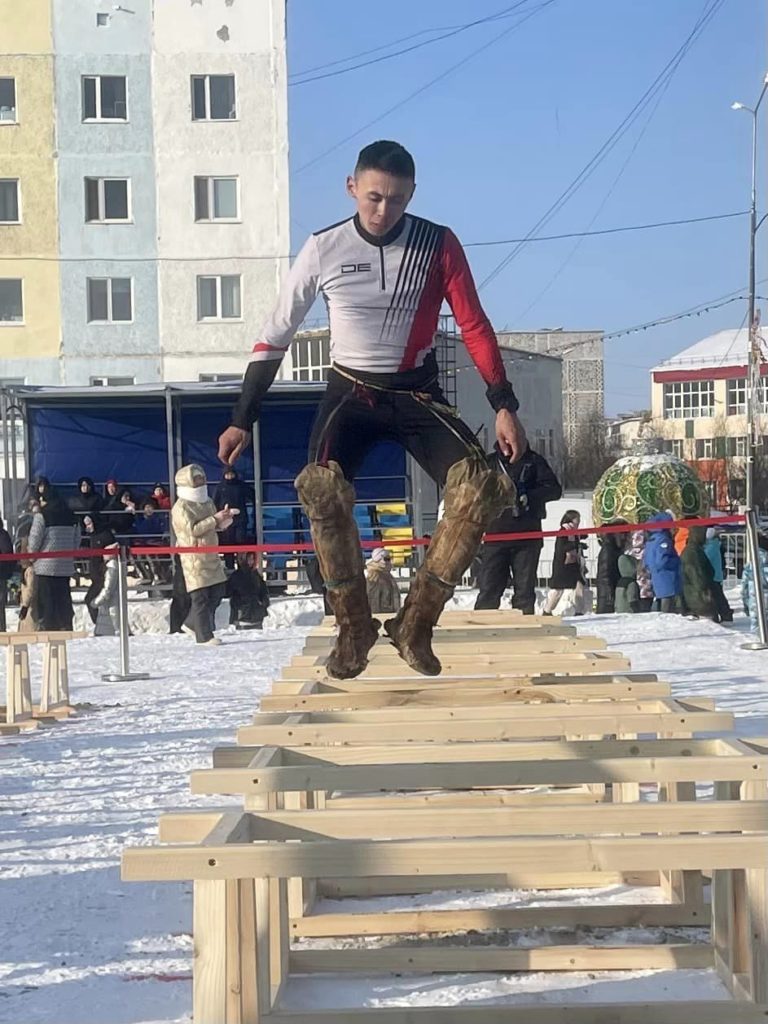
I am unlikely to be able to throw a tynzyan (a 30-meter harness) from 15 meters to a standing choir (a long stick used to chase deer), as well as everything else.
But we were very lucky, because yesterday in Nadym we came across an incredibly beautiful festival of northern peoples, sporting competition of reindeer herders, and we could observe this action with our own eyes.
A woman reindeer breeder makes her own clothes and shoes for the whole family. Moreover, she sews the skins for the tent and sets it up. She also cooks, does the laundry, cleans the tent and everything else.
A man deals with deer.
She's a pretty girl, isn't she?

Malitsa is a reindeer herder's outerwear. It is very warm, spacious and comfortable.
Families came to the party with children, some very young, 1.5-2 years old. But I didn't hear them being cranky or crying.
This baby deer is half a year old and his name is Misha. The children of reindeer breeders often have their own reindeer, just like we buy a puppy for a child, so they have a reindeer. The child feeds him, goes everywhere with him, and they grow as friends.
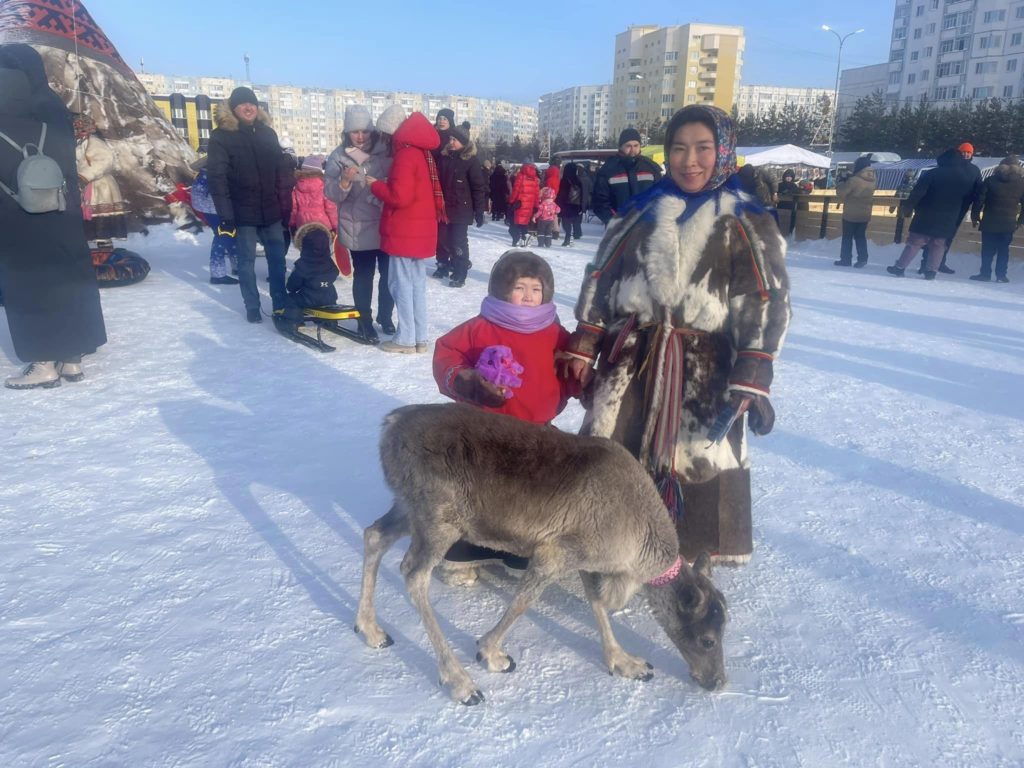
Nenets, Khanty, Mansi. They have a different language, but their lifestyle is almost the same. Like all the peoples of the north.
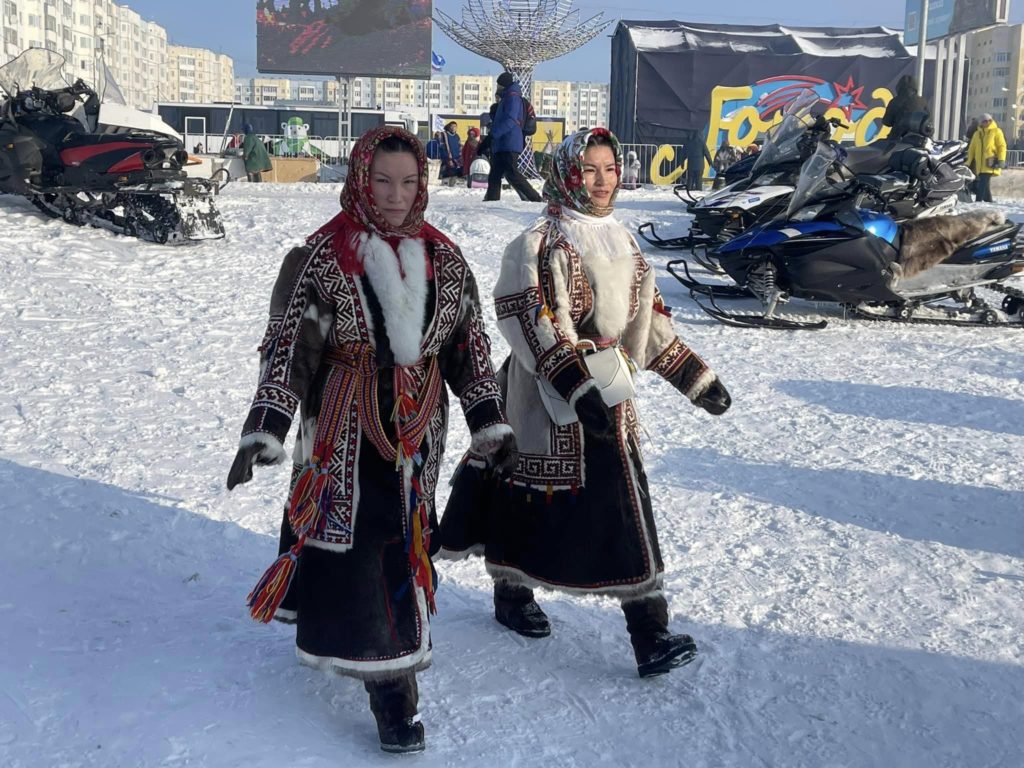
A tent is like a house on wheels, that is, on a sleigh. You come, set it up, and live where you like.
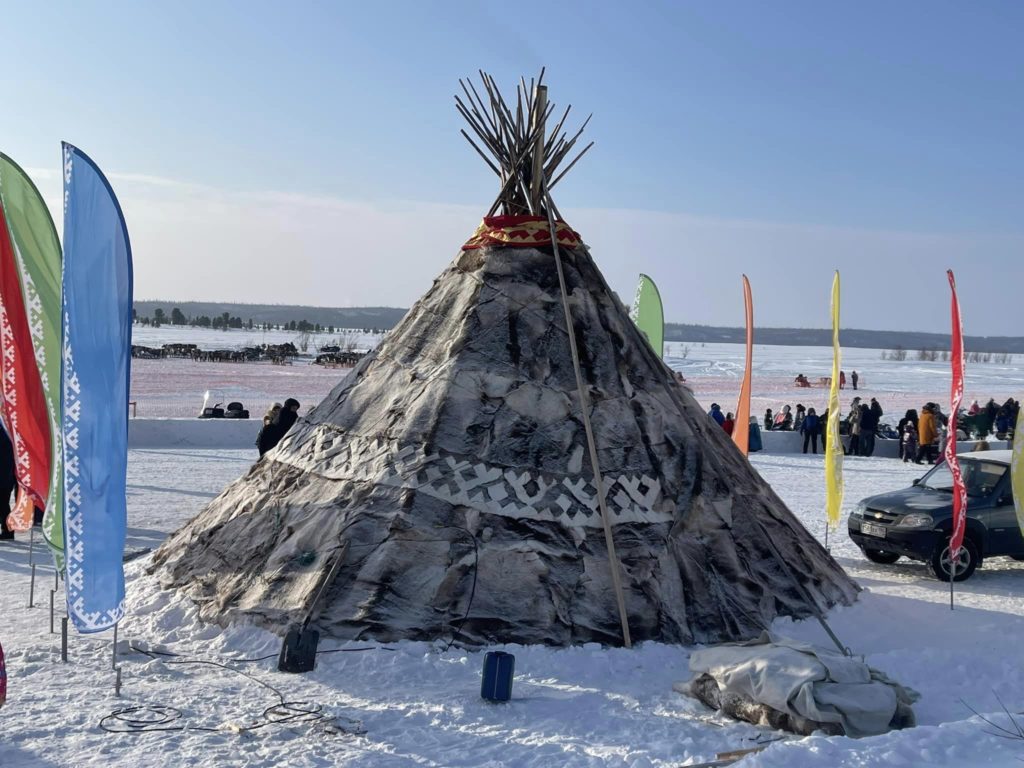
The festival also has a fair where you can buy everything - food, clothes, knives made of bone and other souvenirs.
It was a very cool and spectacular event! Local Olympic Games with all the attributes - the opening ceremony, the performance of artists, illumination, thousands of spectators and participants who came to Nadym from all over the north on their sledges along with tents and other household equipment.
Everything is unusual, bright, beautiful and a lot of fun!
comments powered by HyperComments






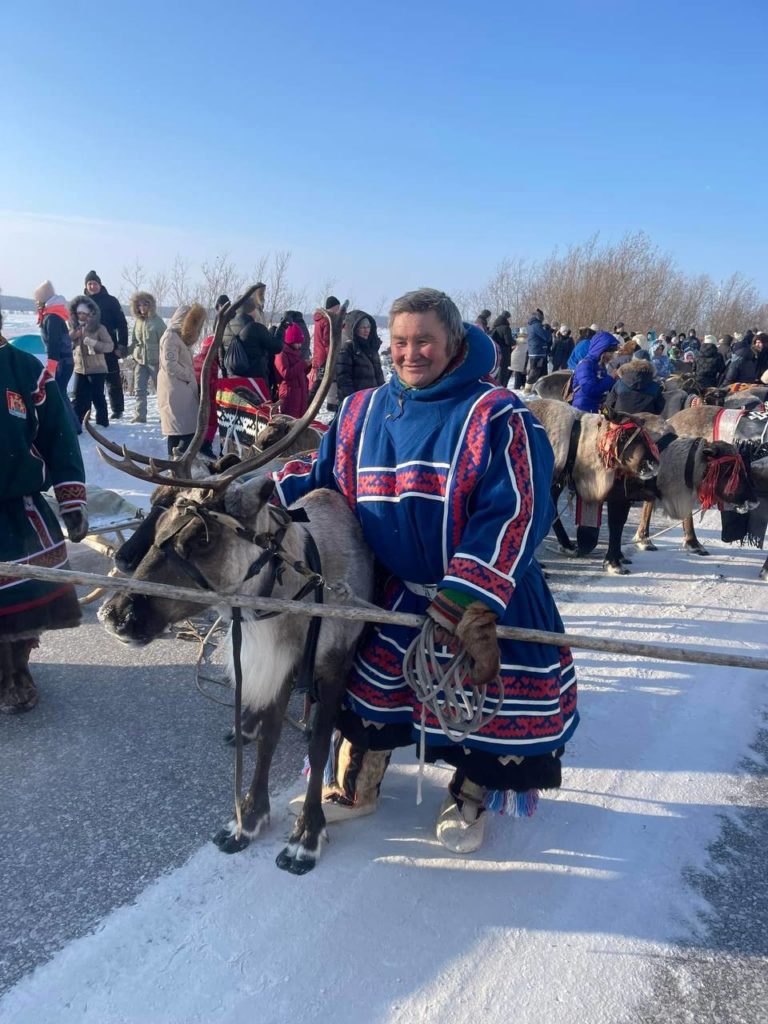




 Cap-travel.ru
Cap-travel.ru
